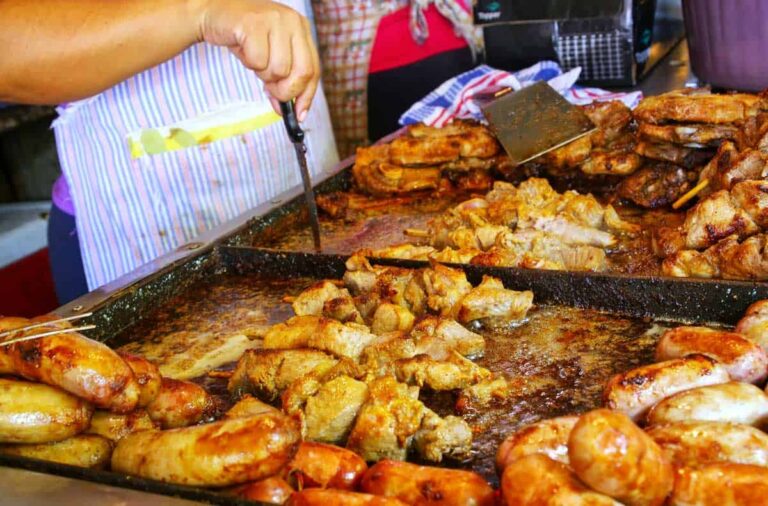Introduction: Paraguayan street food
Paraguay is a landlocked country in South America known for its diverse cuisine. The country’s street food is no exception, boasting a range of unique and delicious dishes that reflect the nation’s multicultural heritage. Paraguayan street food is a popular choice among locals and tourists alike, offering a taste of the country’s rich culinary history.
Indigenous cultures in Paraguay
Paraguay is home to many indigenous cultures, including the Guaraní, who are the largest ethnic group in the country. These indigenous peoples have had a profound influence on Paraguayan cuisine, particularly in terms of the ingredients used. Indigenous communities traditionally relied on local crops such as corn, cassava, and yerba mate, which are now staples in Paraguayan cuisine.
Traditional ingredients in Paraguayan cuisine
Paraguayan cuisine is characterized by its use of fresh, local ingredients. Corn and cassava are two staples, used in everything from bread to porridge. Yerba mate is also a popular ingredient, used to make a traditional tea that is consumed throughout the country. Other common ingredients include meat, particularly beef, as well as vegetables such as tomatoes, onions, and peppers.
Indigenous influence in Paraguayan street food
Indigenous influence is evident in many of Paraguay’s street foods. One popular dish is chipa, a dense, cheesy bread made from cassava flour and cheese. Another is sopa paraguaya, a cornbread that is typically served as a side dish. Both of these dishes have their roots in indigenous cuisine and continue to be enjoyed by Paraguayans to this day.
Popular street food with indigenous roots
One of the most popular street foods with indigenous roots is mbejú, a type of flatbread made from cassava flour, cheese, and egg. Mbejú is a staple in Paraguay and is often enjoyed at breakfast or as a snack. Another popular street food is empanadas, which are small pastries filled with meat, cheese, or vegetables. Empanadas have become a popular street food throughout Latin America, and in Paraguay, they are often filled with local ingredients such as beef and corn.
Conclusion: Celebrating indigenous heritage in Paraguayan cuisine
Paraguayan street food is a delicious and diverse reflection of the country’s multicultural heritage, and indigenous cultures have played a significant role in shaping the nation’s cuisine. From chipa to mbejú, Paraguay’s street food offers a taste of the country’s rich culinary history and is a testament to the enduring influence of indigenous cultures. By celebrating these traditions and incorporating them into modern cuisine, Paraguayans are keeping their culinary heritage alive for future generations to enjoy.

